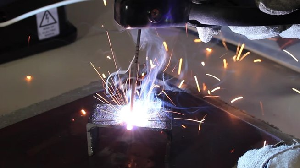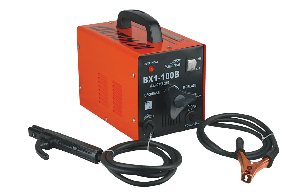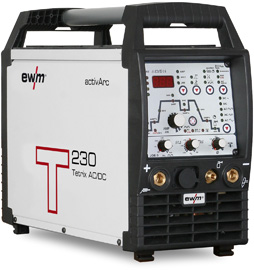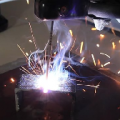 Arc welders use both AC and DC current. In order to make the best welds a welder must understand what alternating current (AC) and direct current (DC) signify on the welder as well as on electrodes. AC and DC are terms that refer to the polarity of the electrical current that is created by the welder and runs through the electrode.
Arc welders use both AC and DC current. In order to make the best welds a welder must understand what alternating current (AC) and direct current (DC) signify on the welder as well as on electrodes. AC and DC are terms that refer to the polarity of the electrical current that is created by the welder and runs through the electrode.
The strength of a weld depends on selecting an electrode with the correct polarity because the polarity of the electrode can significantly affect both the strength of the weld as well as the quality of the weld.
What Is Welding?
Welding is a process used to join metals together by melting the parts and using a filler to form a joint. Welds can be accomplished using different energy sources from a gas flame or electric arc to a laser or ultrasound.
The welding processes used currently include arc welding which is done through the use of electrical current; gas welding which is most commonly used in the repair of pipes and tubes; resistance welding which uses additional sheets of metal to encase the workpieces that will be joined together; and energy beam welding or laser beam welding which is fast and accurate but very expensive.
Welding cannot be done with all types of metals. For example, stainless steel is prone to cracking and distortions when it is overheated. Alloys are often a problem because it is difficult to know the exact chemical composition of the metal.
An interesting fact about welding is that welding can be done under unusual conditions such as underwater and in outer space.
What Is Polarity?
Every electrical circuit has a negative and positive pole. Direct current flows in a single direction resulting in a constant polarity. Alternating current or AC current flows in one direction half of the time and in the opposite direction the other half. AC current changes its polarity 120 times per second with a 60 hertz current.
Electrode positive or reversed polarity (AC current) results in deeper penetration while electrode negative (DC) or straight current provides faster deposition rates because there is quicker melt-off of the electrode. There are different types of electrodes and electrode shielding that can alter these basic conditions. Some kinds of shielded electrodes function using either polarity while others only operate on one polarity.
In order to achieve proper penetration, uniform beading and good welding results the correct polarity must be used when welding with any given metallic electrode. Using incorrect polarity results in poor penetration, irregular bead shapes, excessive splatter, overheating, lack of arc control and quick burning of the electrode.
Most arc welders have clearly marked terminals or directions for how the welder can be set to either polarity. Some welding machines use a switch to change polarities and others require changes be made to the cable terminals.
Welding with AC Current
Welding with AC is ideal for the following  types of welds:
types of welds:
- Downhand heavy plate
- Fast fill
- Aluminum TIG welding with Hi frequency
Carbon arc torches have two types of AC current: a smooth arc for general purpose welding and a force arc for carbon arc, TG attachments and new fabrications.
Welding with DC is best used for:
- Hard facing
- Single carbon brazing
- Build-up of heavy deposits
- Stainless steel TIG welding
- Cutting tap
DC Reverse Polarity
In DC reverse polarity the electrode is positive and the current flows from the workpiece to the electrode. Welding with reverse DC polarity is ideal for:
- Overhead welding
- Vertical welding
- Cast iron welding
- Heavy aluminum
- Rivet welding
- Sheet metal
- Low hydrogen welding
- Arc bronze rod
Advantages of DC Welding
 When it comes to stick welding applications DC welding offers certain advantages over AC. Generally, starts are easier, there are fewer arc outages and sticking, there is less spatter, welds have a better appearance, welding vertically or overhead is much easier and DC current is the best ways for beginners to learn “how to weld”. DC welding also provides a smoother arc and DC straight polarity welds a lot of thinner metals better than AC.
When it comes to stick welding applications DC welding offers certain advantages over AC. Generally, starts are easier, there are fewer arc outages and sticking, there is less spatter, welds have a better appearance, welding vertically or overhead is much easier and DC current is the best ways for beginners to learn “how to weld”. DC welding also provides a smoother arc and DC straight polarity welds a lot of thinner metals better than AC.
Advantages of AC Welding
The main advantage of AC output welding is that it enables one to weld on magnetized materials because the current alternates between polarities. DC output does not work on magnetized materials because of “arc blow” which is when the magnetic field blows molten filler metal out of the weld puddle.
Welding Machines and Safety
Many cities and states require welders to be trained and certified in order to operate welding machines. There are also requirements for personal safety equipment and fire-prevention measures that welders must follow.
Welding fumes can cause breathing problems in welders. Some problems are short term and others may be long term illnesses like asthma. Welding fumes are also internationally classified as possible carcinogens. There are specific methods for reducing the exposure to fumes. Contact OSHA or the American Welding Society for more information.
Burns are probably the most common injury associated with welding. Personal protective clothing can significantly reduce the risk of burns. Personal protective equipment for welders includes fire-resistant clothing, safety glasses, shoes, gloves, hood and welding helmet and leathers. Synthetic clothing should never be worn because it melts when exposed to extremely high heat. Wool is a better choice because it is durable and resistant to fire.
Pants and shirts should not be rolled up because sparks can get deposited in the folds. Pants should also be worn outside of shoes or work boots to protect particles from falling inside the shoes or boots. Safety goggles should always be worn under the welding helmet. If safety glasses are used instead of goggles they should also have side shields.
Conclusion
AC And DC welding are both needed to accomplish certain tasks. DC welding generally has more advantages over AC welding but the most important thing for a welder to understand is how polarity works so that the welder can choose the proper electrode with the right polarity for the job.
